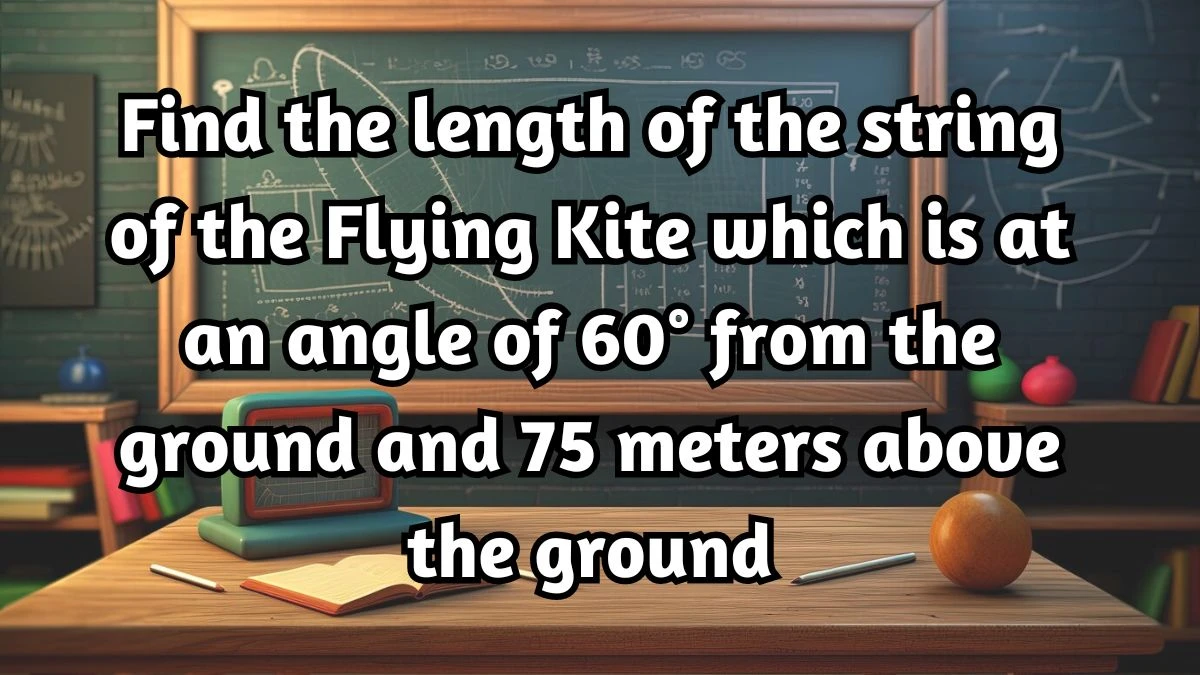Find the length of the string of the Flying Kite which is at an angle of 60° from the ground and 75 meters above the ground
by
Updated Jun 17, 2024

Find the length of the string of the Flying Kite which is at an angle of 60° from the ground and 75 meters above the ground
To find the length of the string of the flying kite, given that it forms an angle of 60° from the ground and is 75 meters above the ground, trigonometric ratios are used.
Consider a right-angled triangle with one side as the height of the pole (75 meters), the hypotenuse as the length of the string (AD), and the angle formed by the string and the ground as 60°
Apply Trigonometric Ratio
Using the sine function (sin), relate the angle and the sides of the triangle
sin 60° = AB/AD
Given that AB = 75 meters
√3/2 = 75/AD
AD = 75/√3/2
AD = 75x2/√3
AD = 150/√3
AD = 86.6 meters
Therefore, the length of the string of the flying kite is approximately 86.6 meters.
Trigonometric Ratios
Trigonometric ratios are mathematical functions used in trigonometry to relate the angles of a triangle to the lengths of its sides. The primary trigonometric ratios are sine (sin), cosine (cos), and tangent (tan), which are defined based on the ratios of the sides of a right triangle.
Sine Function (sin)
The sine of an angle in a right triangle is defined as the ratio of the length of the side opposite the angle to the length of the hypotenuse.
It is represented as sin(θ) = opposite/hypotenuse
Cosine Function (cos)
The cosine of an angle in a right triangle is defined as the ratio of the length of the side adjacent to the angle to the length of the hypotenuse.
It is represented as cos(θ) = adjacent/hypotenuse
Tangent Function (tan)
The tangent of an angle in a right triangle is defined as the ratio of the length of the side opposite the angle to the length of the side adjacent to the angle.
It is represented as tan(θ) = opposite/adjacent
Application in Finding Lengths or Angles
Trigonometric ratios are used extensively in solving problems involving triangles. They can help find unknown side lengths or angles when certain information about the triangle is given, such as the lengths of two sides or the measure of one angle. Trigonometric ratios can be computed using trigonometric tables or calculators, making it easier to solve complex problems involving triangles in various applications such as engineering, physics, astronomy, and navigation.




